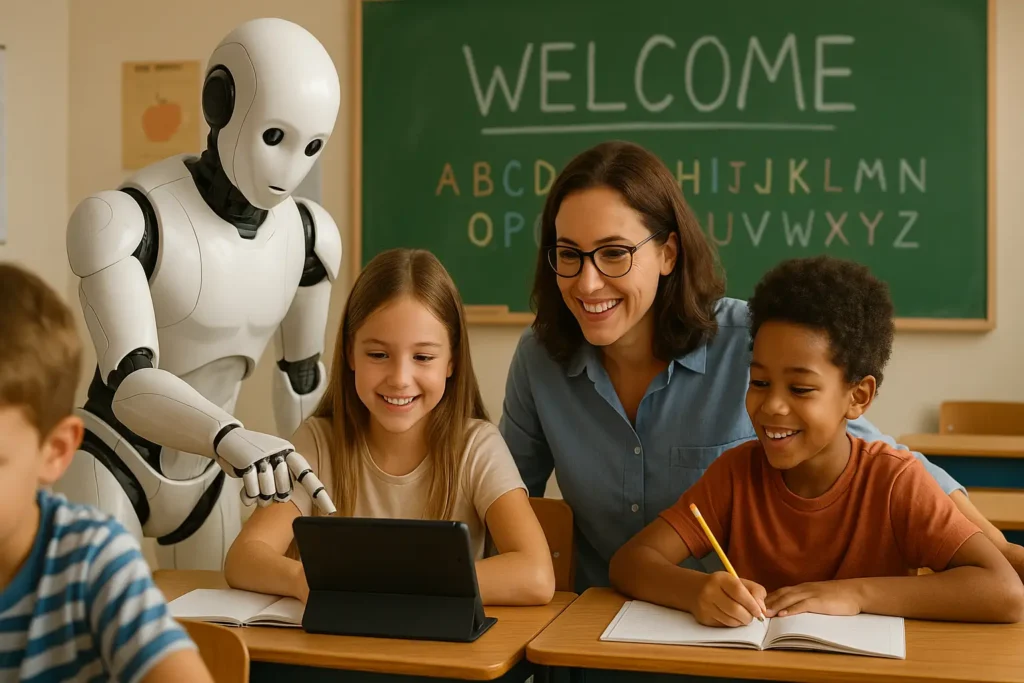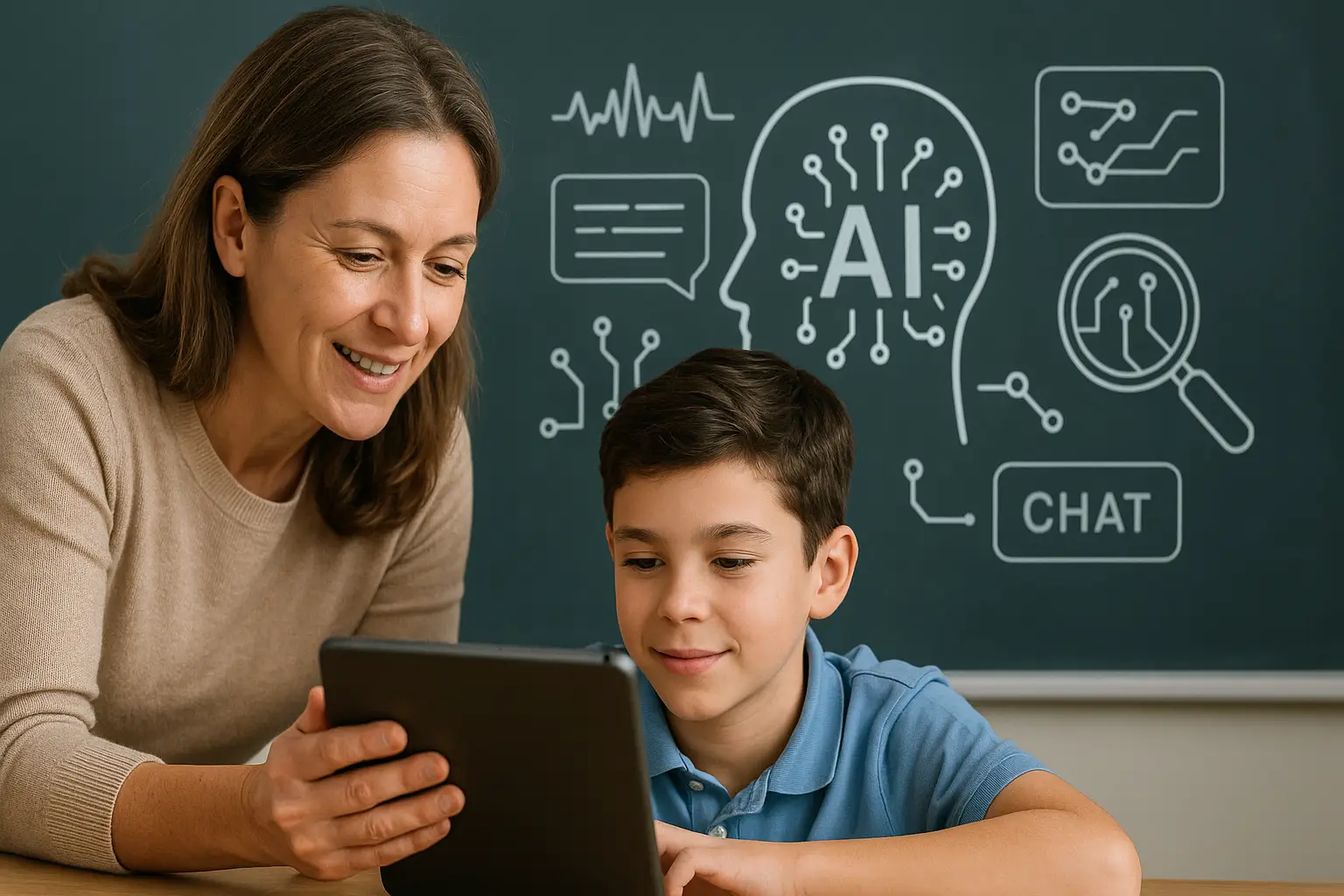Artificial Intelligence (AI) is transforming schools, classrooms, and the way we learn. But here’s the big question: can we trust AI to make decisions alone when it comes to our children’s education? The simple answer is: no — and this article will explain why.
We’ll explore how AI is used in schools today, why it still needs people to guide it, and what can go wrong when it doesn’t have that human touch. Don’t worry, we’ll keep it simple and practical — like a friendly chat over coffee.
Why AI in Education Needs Human Oversight
AI in education is growing fast. It’s being used to correct tests, suggest personalized activities, and even help students learn at their own pace. But right at the start, let’s be clear: AI in education needs human oversight because it can’t understand everything — especially emotions, context, and human values.
Imagine this: a student is having a hard day and fails a quiz. An AI might simply lower their learning level. But a teacher would ask: “Are you okay? Is something going on at home?” That’s the kind of care and understanding AI just doesn’t have.
👉 Explore whether AI can replace traditional teaching in education and how it can complement classroom teaching to enhance learning.
What Is AI Doing in Classrooms Today?
Let’s start with what’s already happening.
- AI platforms recommend learning materials based on a student’s level.
- Chatbots answer students’ questions day and night.
- Automatic grading saves teachers time.
- Tools like Grammarly or spell checkers help with writing.
These tools can be helpful, for sure. But they don’t always get it right.
An Example You Might Relate To
Think of a GPS. It’s smart and helps you find your way, but sometimes it suggests a longer or wrong route. That’s why we don’t just follow it blindly — we use our judgment too. AI in schools is similar. It’s a tool, not a teacher.
What Could Go Wrong Without Human Supervision?
Even the best AI can make mistakes — and in education, that can hurt a child’s confidence, learning progress, or even future chances. Let’s look at some real risks:
1. Bias in AI
AI learns from data. If the data is biased (for example, favoring certain races or regions), the AI will be too. This can lead to unfair grading or wrong suggestions.
2. Misunderstanding Emotions
AI doesn’t know if a student is sad, stressed, or just distracted. It might give wrong feedback or punish someone who actually needs help.
3. Lack of Cultural Sensitivity
Every student comes from a unique background. AI might not understand jokes, traditions, or ways of speaking from different cultures. That can lead to confusion or offense.
4. Replacing Human Connection
Learning is more than just facts. It’s about motivation, empathy, and relationships. If AI replaces too much of the teacher’s role, students lose that human connection.

Why Teachers Are Still Essential
Teachers are the heart of the classroom. They guide, inspire, and adapt to each student’s needs. Here’s why their role can’t be replaced:
- Emotional intelligence: Teachers notice things AI can’t — like when a child is sad or excited.
- Experience and judgment: Teachers can change their approach in the moment, while AI follows patterns.
- Cultural knowledge: Teachers understand their students’ background and adapt lessons accordingly.
AI can be a great assistant, but only when guided by people who care.
Balancing AI and Human Oversight
Let’s not throw away AI. It has great potential when used with people, not instead of them. The best mix includes:
- Teachers using AI to save time on repetitive tasks.
- Parents and educators checking AI recommendations before applying them.
- Schools training teachers to understand how AI works — and its limits.
Tips for Educators
- Always double-check AI suggestions before applying them in class.
- Use AI to help with routine work, not emotional decisions.
- Teach students to question results — AI is not always right.
- Create a classroom culture where tech supports, not replaces, relationships.
Is AI Taking Over Teaching? Not So Fast.
Some people worry AI will replace teachers. But think about this: can a machine replace the warm hug a child needs on a hard day? Or the excitement in a teacher’s voice when explaining a fun topic? No app or robot can truly replace that magic.
Yes, AI can help. But it’s not the boss. We are.
Key Points About Why AI in Education Needs Human Oversight
- AI tools are helpful, but not perfect — they need human judgment.
- Teachers bring emotional understanding that AI lacks.
- AI can be biased or misunderstand students’ needs.
- Human oversight prevents errors and protects students.
- The best results come when AI supports, not replaces, educators.
- Training and awareness are key for safe and effective AI use in schools.
Conclusion
AI in education is not the enemy. It can be a powerful helper — like a digital assistant that makes a teacher’s job easier. But it can never replace the care, intuition, and understanding that only humans bring. For this reason, we must always keep human eyes and hearts involved in the learning journey.
The future of education isn’t robots taking over. It’s teachers and technology working side by side — with humans in control.
💬 What do you think? Should AI have a bigger role in classrooms? Let’s chat in the comments!

